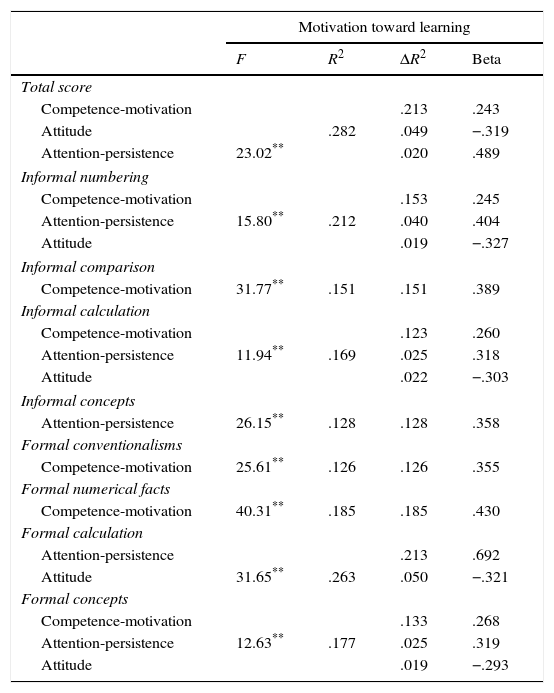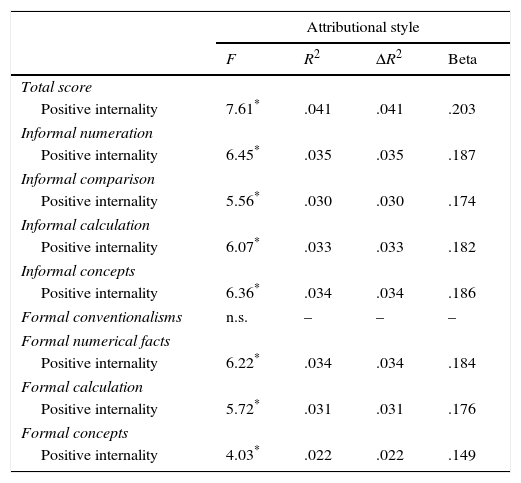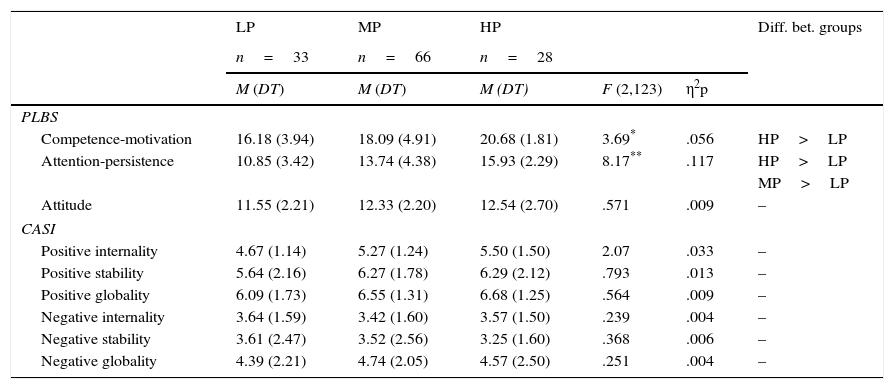This longitudinal study analyses the predictive value of a set of motivational variables on academic performance in the mathematics area. Analyses were performed on a sample of 180 children, with the data evaluated in two stages in formal educational settings (from kindergarten until 2nd year of Primary School). Likewise, differences between three groups (with low, average, and high mathematical performance at the end of second year of Primary School) in motivational and attributional variables assessed initially are also studied. The results show a significant predictive power on later mathematics achievement for self-perceived competence. Also persistence, attitude, and positive attributional dimension of internality have an additional significant contribution. The results also show that high and low performance groups at the end of 2nd year of Primary School showed significant differences at 5 years, both in self-perceived competence and in persistence. There are also differences in persistence between average and low performance groups. These results are discussed in terms of their theoretical and practical implications.
Se analiza longitudinalmente la capacidad predictiva de un conjunto de variables motivacionales sobre el rendimiento matemático. Los análisis se realizan, en una muestra de 180 niños, con datos evaluados en dos momentos (Educación Infantil 5 años y 2.° curso de Primaria). También se estudian las diferencias entre tres grupos (con rendimiento matemático bajo, medio y alto al finalizar el primer ciclo de Primaria) en las variables motivacionales evaluadas en el primer momento. Los resultados muestran un importante poder predictivo sobre el rendimiento matemático posterior de la autocompetencia percibida. También la persistencia, la actitud y la dimensión atribucional de internalidad positiva aportan una contribución significativa adicional. Los resultados muestran igualmente que los grupos con rendimiento alto y bajo al finalizar 2.° de Primaria presentaban diferencias significativas a los 5 años, tanto en autocompetencia percibida como en persistencia. Aparecen también diferencias entre los grupos de rendimiento medio y bajo en persistencia. Se discuten las implicaciones teóricas y prácticas de los resultados.








